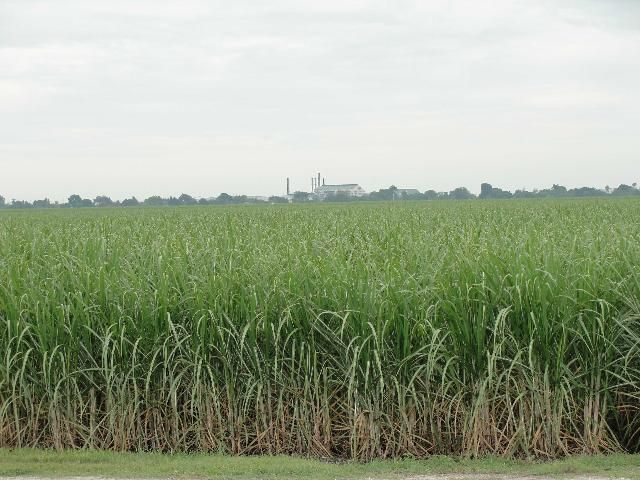Sugarcane Product in Traditional Healing: Healing Benefits You Should Know
Sugarcane Product in Traditional Healing: Healing Benefits You Should Know
Blog Article
The Journey of Sugarcane: From Harvest to Everyday Products
The trip of sugarcane is a diverse procedure that starts with meticulous cultivation and culminates in a range of items that permeate our day-to-day lives. As we explore the different elements of sugarcane's trip, its duty in sustainability and the wider effects for our atmosphere come right into sharper emphasis.
Farming of Sugarcane
The farming of sugarcane is a crucial agricultural process that calls for certain ecological problems and management practices. Optimal growth occurs in subtropical and tropical areas where temperatures range between 20 ° C and 32 ° C. Adequate rainfall or watering is important, as sugarcane flourishes in moist dirt with well-drained conditions (sugarcane product). Soil high quality considerably influences return; therefore, farmers frequently perform soil tests to identify nutrient demands
This technique helps with efficient gathering and maximizes sunlight exposure. Crop turning and intercropping are advised practices to boost dirt fertility and lower parasite problems.
Prompt application of these plant foods can considerably enhance sugar returns. Generally, effective sugarcane growing hinges on a mix of ecological stewardship, tactical preparation, and continuous monitoring practices.
Collecting Strategies
Effective sugarcane farming culminates in the harvesting stage, which is essential for optimizing return and making sure quality. The timing of the harvest is critical; sugarcane is normally gathered when sucrose levels top, normally in between 10 to 18 months after growing. This period differs based upon environment, soil type, and sugarcane range.
Harvesting techniques can be generally classified right into manual and mechanical methods. Manual harvesting is labor-intensive, counting on knowledgeable workers who make use of machetes to reduce the stalks close to the ground. This approach enables careful harvesting, where just the ripest walking canes are chosen, thus boosting general sugar web content.
Alternatively, mechanical harvesting has actually gained appeal as a result of its performance and cost-effectiveness. Specialized farmers furnished with cutting blades and conveyor systems can process large areas swiftly, significantly lowering labor expenses. Nevertheless, this method might result in the addition of immature walking sticks and a possible decline in sugar top quality.

Regardless of the method used, making certain that collected walking canes are carried rapidly to processing facilities is vital. Prompt managing decreases perishing and preserves the honesty of the sugarcane, setting the phase for optimal processing.
Handling Methods
Handling sugarcane entails several vital actions that transform the collected stalks right into useful products, largely sugar and molasses. The first phase is cleaning the walking cane to remove dirt and debris, followed by the removal of juice via crushing or milling. This procedure generally uses hefty rollers that damage the walking stick fibers to release the pleasant fluid had within.
When the juice is extracted, it goes through information, where impurities such as soil bits and bagasse are gotten rid of. This is typically attained by including lime and heating up the juice, enabling sedimentation. The clarified juice is after that focused with dissipation, where water web content is reduced, causing a thick syrup.

Inevitably, the processing of sugarcane not only generates sugar and molasses have a peek at this site yet additionally prepares for various derivatives, which will certainly be checked out in subsequent discussions.
Products Derived From Sugarcane
Sugarcane is a flexible plant that produces a large range of items beyond simply sugar and molasses. Amongst the main byproducts are ethanol and biofuels, which have obtained prominence as sustainable energy sources. Ethanol, produced through the fermentation of sugarcane juice, works as an alternate to nonrenewable fuel sources and is frequently blended with gas to develop cleaner-burning fuels, decreasing greenhouse gas discharges.
Furthermore, sugarcane is a substantial resource of bagasse, the coarse deposit staying after juice removal. Bagasse is made use of in various applications, consisting of the production of paper, eco-friendly product packaging, and as a biomass gas for power generation. Its use not only decreases waste but likewise boosts the sustainability of sugarcane handling.
Furthermore, sugarcane-derived products expand to the food industry, where it works as an all-natural flavoring representative and sugar in different cooking applications. In the realm of cosmetics, sugarcane extracts are integrated into skin care items because of their natural exfoliating homes.
Environmental Impact and Sustainability
The cultivation and handling of sugarcane have substantial ramifications for ecological sustainability. This plant needs substantial water sources, typically bring about depletion of local water supplies and affecting bordering communities. Additionally, the use of fertilizers and chemicals in sugarcane farming can lead to soil deterioration and river pollution, positioning risks to biodiversity.

Lasting check this sugarcane farming also promotes soil health and wellness via plant rotation and lowered tillage, boosting carbon sequestration. The fostering of these methods not only sustains environmental honesty yet likewise boosts the resilience of farming neighborhoods against climate modification.
Final Thought
In recap, the trip of sugarcane incorporates various phases from farming to processing, inevitably leading to a large array of products. The significance of sugarcane expands past plain sugar, adding to renewable resource via ethanol production, lasting product packaging using bagasse, and natural extracts for cosmetics. This diverse plant plays a crucial duty in both dietary enrichment and ecological sustainability, highlighting its significance in modern great site farming and industrial methods.
Successful sugarcane cultivation culminates in the collecting stage, which is critical for taking full advantage of return and guaranteeing high quality. The timing of the harvest is crucial; sugarcane is typically harvested when sucrose levels optimal, generally between 10 to 18 months after planting.Handling sugarcane entails numerous vital actions that transform the harvested stalks right into usable products, mostly sugar and molasses.Sugarcane is a functional plant that yields a vast range of items past simply sugar and molasses. In addition, the use of fertilizers and chemicals in sugarcane farming can result in soil degradation and waterway air pollution, posing threats to biodiversity.
Report this page